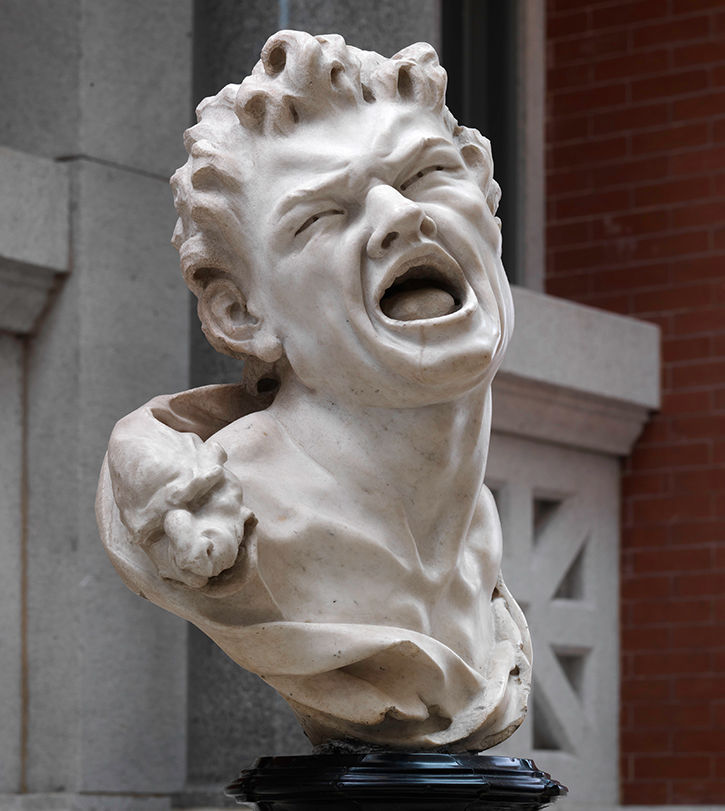Marsyas

Balthasar Permoser (German, 1651–1732). Marsyas, ca. 1680–85. Marble on a black marble socle inlaid with light marble panels. The Metropolitan Museum of Art, New York, Rogers Fund and Harris Brisbane Dick Fund, 2002 (2002.468).
In one of the great parables of hubris, the satyr Marsyas challenged the god Apollo to a musical competition. The god triumphed and then punished his challenger by skinning him alive. Here, Permoser condensed the tragic climax of the story into an emotive portrayal of Marsyas. The contorted face, with an open mouth revealing a bitten tongue, and twisting head immediately convey pain, while the taut shoulders suggest that his arms are bound behind his back. The satyr is draped with an animal pelt, pointing to his gruesome fate. The panels of mottled marble set into the base are flecked with red, perhaps evoking spattered blood.
"It's difficult for me to walk past and not stop and gasp every time."
—Alice Schwarz, educator
"This piece illustrates how rich our ability to interpret a face is."
—Edward Vessel, neuroscientist
"What looks like drapery is, in fact, the skin from the breast."
—Wolfram Koeppe, curator
All voices: Wolfram Koeppe, curator; Alice Schwarz, educator; Edward Vessel, neuroscientist
Transcripts: Agony's Body Language (Video), The Myth Behind the Bust (Video)